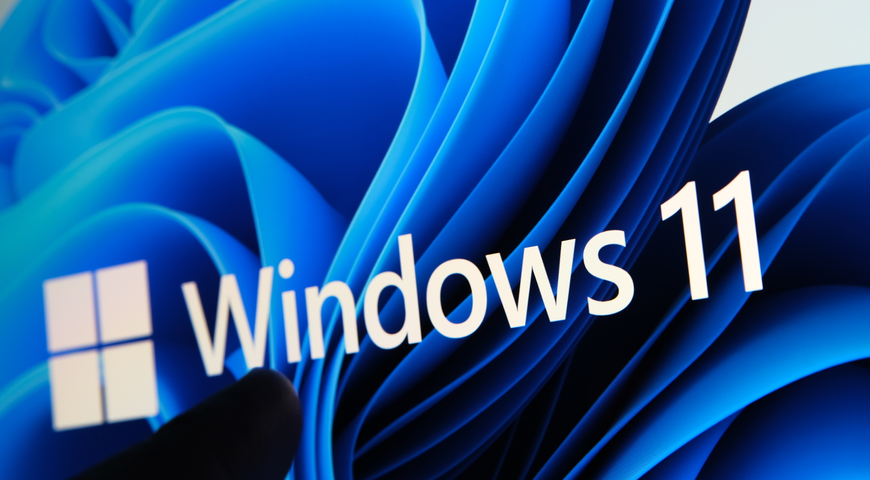
While Windows 11 enables you to create a backup image of your computer, it does not provide the full breadth of features that other third-party backup solutions do. Here is the skinny on what you need to know to protect your Windows 11 environment fully.
How does data backup work?
Some backup solutions only back up your documents, files, and folders. In contrast, others, like Windows 11 Backup and Restore and Acronis True Image, provide full-image backups that include the operating system (OS), data and applications. When you perform an initial backup, the software replicates your entire system.
Subsequent backups are typically called an "incremental backup" or a "differential backup"; they only capture the data changes since the last backup, which saves both time and storage space.
Do I need a Windows 11 backup system on my computer?
The short answer is yes! Regardless of your OS, you want to create a full-image backup of your computer, including the data, applications, and OS.
If you experience an unforeseen event — such as a cyberattack, software / hardware failure, human-made or natural disaster, power failure, theft of your device, accidental deletion of files, folders, data, etc. — you will be able to recover every bit of your data and not suffer any data loss.
Does Windows 11 have a backup program?
The newest addition to the OS offers a couple of Windows backup features — Backup and Restore and File History.
However, Windows 11 also packs OneDrive, Microsoft's native "backup" option. The common misconception about OneDrive is that it offers true backup while, in fact, it's merely a syncing feature.
OneDrive allows users to store their files on a cloud storage service so that they can access them via any device logged in with the corresponding account.
While this is convenient, OneDrive doesn't let you recover files you've already deleted or have lost to corruption. If a document or a media file is deleted from your primary device, it also gets removed from OneDrive during the next sync cycle.
And while OneDrive is an optional feature for older Windows systems, in Windows 11 Home Edition, the default configuration is to "back up" files from Desktop, Documents, and Pictures folders directly to OneDrive.
In a sense, OneDrive is intertwined with File Explorer to enable easy data management across all devices where you've signed in with the same account.
Nevertheless, suppose you have tens or hundreds of gigabytes in the abovementioned folders. In that case, the default folder synchronization will sync the folders' contents to any device you sign in to with the same account. This can quickly raise severe storage issues. And since OneDrive doesn't actually keep backups of your data, it seems like it brings more trouble than efficiency. (at least, in some cases)
If you want to free up storage on other devices, you can turn off OneDrive completely.
To do so:
- Open "File Explorer" → right-click the OneDrive icon (on the left of the navigation pane)
- Select "OneDrive" → "Manage OneDrive Backup"
- In the dialog box, click "Stop Backup" under one, two or all three default folders
Once you're done, the local folders will be restored. However, saved files will still reside in OneDrive, so you'll need to migrate them back to the local drive.
Another way to go is archiving. If you still want to backup folders to OneDrive, you can archive older files folders.
You can do so by right-clicking the folders and removing the "Always Keep On This Device" checkmark. Once done, your data will still be synced to OneDrive, but it will take up almost no local space.
Now that we've covered OneDrive, let's explore the more robust options for Windows backup below.
Windows 11 recovery system — Is it enough?
As we've mentioned, Windows 11 offers two ways to back up your PC:
- Backup and Restore creates a full-image backup but only allows recovering the full image. Microsoft recommends that you use the Windows 11 recovery system to create a recovery drive, so if you run into problems with your OS later, you can reinstall Windows 11 using the recovery drive.
- File History lets you back up and recover selected files and folders.
If you want the flexibility to recover a full-image and selected files/folders, you will need to use both Windows 11 options to recover your data adequately — or you can consider a third-party solution that enables you to create a full-disk image and download either the entire PC image for a full PC recovery or selected files and folders.
Windows 11 has other limitations, including no option to store a file backup on the cloud and no easy way to follow the 3-2-1 backup rule. Even for home users, this limitation is significant.
For obvious reasons, backups shouldn't be stored in the same location as your PC. If a fire or flood destroys your computer, your local backups will likely be destroyed as well.
The Best Backup Software for business of all sizes, offering backup & recovery functionalities for 20+ platforms
Fast, powerful, backup-as-a-service built for managed service providers. Supports 20+ platforms & environments.
How do I backup and restore files in Windows 11?
Even if the backup process of the Windows in-built features is suboptimal, you can still use them to back up Windows 11 locally.
In Windows 11, you can follow two paths to invoke the Backup and Restore option:
- "Control Panel" → "System and Security" → "Backup and Restore (Windows 7)"
- "Settings" → "System" → "Storage" → "Advanced Storage options" → "Backup options" → scroll down to "Looking for an older backup" → select "Go to Backup and Restore (Windows 7)"
How to do a file backup via Windows 11 Backup and Restore?
- Go to "Control Panel" → "System and Security" → "Backup and Restore (Windows 11)"
- Select "Set up backup" under the "Backup" section
- If asked, enter your admin passcode
- Select "Backup Drive" → click "Next"
- Select "Let Windows Choose" → click "Next" (this will back up user-associated files — Desktop files, Libraries, and default Windows 11 folders)
- Click "Save settings and run backup"
How to do a file backup via Windows 11 File History?
The backup process via File History requires you to connect an external storage device to your computer.
- Connect the external hard drive to your computer
- Navigate to "System" → "Storage" → "Advanced storage settings" → "Backup options"
- Select "Add a drive" (under "Backup using File History")
- Toggle the "On" switch under "Automatically back up my files"
- Choose "More options" to configure File History specifics
The options include how often to back up files via the File History feature, which files to back up, and the retention rate of saved backups.
"Back up my files" option
By default, File History will back up your data every hour. You can change the setting in the interval from 10 minutes to 24 hours.
"Keep my backups" option
By default, File History will keep backups forever. You can change the setting in the interval from one month to two years.
"Back up these folders" option
You can inspect the complete list of default backup folders for File History. Then, you can add more options to the backup via the "Add Folder" option. You can also delete options from the backup list via the "Delete" option.
- When done with configuring the backup scheme, you can save the Windows settings and exit the menu → click "Back up now"
File History will now back up your data following your chosen schedule as long as the external hard drive is connected to your computer.
How to restore files via Windows 11 Backup and Restore?
To restore files and folders via this method, follow the steps below:
- Navigate to the "Backup and Restore" menu
- Click "Restore my files" under "Back up or restore your files"
- Click "Browse for folders" → choose a folder → click "Add folder"
Repeat the above step until all folders under "Browse the backup for folders or drives" are added and appear on the "Restore files" list.
- Click "Next" under "Restore files" → click "Restore" to initiate data restoration
How to restore an individual file via Backup and Restore:
- Click "Restore my files" under "Back up or restore your files"
- Click the "Search" button → search for files and folders → select the ones you wish to restore → click "OK" (repeat the step, if needed)
- Click "Next" under "Restore files" → click "Restore" to recover the chosen files
How to restore files and folders via Windows 11 File History?
To restore files and folders via File History, follow these steps:
- On the "File History" screen, click "Restore personal files" (from the options on the left)
- Choose a backup and click on the green "Restore" icon to initiate the recovery
To restore individual files via File History:
- Open "File Explorer" → navigate to the file → right-click on it → click "Properties"
- Switch to the "Previous Versions" tab → select a version → click "Restore"
How to restore an entire system image backup via Backup and Restore?
If you've initiated an image backup via Backup and Restore, you will only be able to restore it upon reinstalling your Windows. As the feature creates a complete image of your Windows 11 contents, you need to restore it as such.
To kick off the process, you'll need a bootable Windows 11 drive — either a USB or a DVD — and ensure that your external hard drive (where your backup resides) is connected to the PC.
Next, you'll need to restart your computer and enter the Boot menu. Check your laptop or PC's motherboard manufacturer's site for the Boot menu key combo (so you can enter the Boot menu).
Once you've booted the Windows 11 installer, follow the steps below to recover your backup:
- Make sure you've selected the proper language, keyboard layout, and time and currency format → click "Next"
- Select "Repair your computer" (the option is towards the bottom of the menu)
- Select "Troubleshoot" → select "System Image Recovery"
- On the Restore tool screen, you'll see the external hard drive backup be automatically selected → click "Next"
- The following screen shouldn't prompt for any changes made by you → click "Next"
- Click "Finish" to begin data recovery → click "Yes" to confirm
It will take some time for the data recovery to complete. Once done, the computer will boot into Windows 11 with your backup fully restored.
How to back up Windows 11 backup to external devices via wbAdmin and Acronis?
Aside from File History and Backup and Restore, you can backup Windows contents via the wbAdmin command and dedicated third-party backup software, such as Acronis Cyber Protect and Acronis True Image.
Let's explore how to do that below.
How to back up Windows 11 to External hard drive/SSD/USB?
To create a full backup via the wbAdmin command-line tool, follow the steps below:
- Open the "Start" menu and search for "Command Prompt", right-click on the top result and select "Run as administrator"
- Type the following command and press "Enter" to create the full backup:
wbAdmin start backup -backupTarget:X: -include:C: -allCritical -quiet
In the command text, change "X" next to the "-backupTarget" option with the drive letter corresponding to your external backup storage device. (HDD, SSD, or USB)
If you want to create a full backup that comprises all connected drives to your PC, type the following command and press "Enter":
wbAdmin start backup -backupTarget:X: -include:C:,D:,F: -allCritical -quiet
Again, in the command text, change "X" and the drive letters within the "-include:C:,E:,F:" option with the letters corresponding to the connected external drive(s).
Regardless of the command used, the full backup will be saved to the specified external hard drive (or SSD).
How to Back up Windows 11 to External hard drive/SSD backup via Acronis Cyber Protect?
To backup the entire contents of your Windows computer, follow the steps below:
- Start Acronis Cyber Protect
- On the sidebar, choose "Backup"
- If you have already created backups via Acronis, click "Add backup"
- The "Entire PC" option is selected by default; leave it as is.
- You can choose a specific custom name for your backup.
- Click "Select destination" to choose the external drive as the backup destination
If your external drive is plugged in, it will be automatically detected and displayed in the list of all available backup destinations. If you have a Network-Attached Storage (NAS) connected to the network, Acronis Cyber Protect will detect it as well.
- Click "Options" to set the backup options, such as schedule, scheme, archive cleanup, etc.
Here, it's recommended to set a schedule to ensure regular system backups. If you select the "Do not schedule" option, you will need to run the backup process manually every time via the "Back up now" button.
Moreover, setting a backup retention rate is recommended. Otherwise, regular backups can quickly fill up your storage devices. If you store system backups on an external hard drive or SSD, you can set up cleanup rules in the "Backup Scheme" menu.
- Once you're done with backup customization, click "Back up now" or press the "down arrow" button to choose a different start time option.
How to create a Bootable Windows 11 backup to USB?
Acronis backup software lets you create a rescue bootable media reliant on a standalone Acronis Cyber Protect version. You can use the rescue media to boot a crashed computer or a machine without an operating system and restore an image of your system.
To create Acronis Bootable Media on a Windows PC, follow the steps below:
- In the "Tools" section of your Acronis agent, click "Rescue Media Builder"
- Choose a media creation method - "Simple" or "Advanced"
"Simple" creation is the easiest available option for casual users. The Acronis tool will choose the optimal media type for your PC. As we're discussing Windows backup, the Acronis agent will create WinRE-based media.
"Advanced" creation will allow you to choose the media type to create rescue media not only for your machine but for other devices running a different Windows version.
Below, we will explore only the "Simple" media creation approach as it is more suitable for most users. If you want to use the "Advanced" media creation feature, you can check the specifics here.
- Select a media destination - USB flash drive, ISO image file (which you can burn to CD/DVD), or WIM image (available only for WinPE-based media)
As this is a USB bootable media guide, choose the "USB flash drive" option.
- Click "Proceed"
Wait for the agent to create the bootable media. Once completed, the USB flash drive can be used to recover the system on your current machine or another Windows computer. If you want to restore to dissimilar hardware, create Acronis Bootable Media with the "Universal Restore" option.
It's recommended to test your bootable media to ensure it will boot when you need it.
Do you need both local backup and cloud backup?
Yes, at minimum, you should create and maintain both a local and a cloud backup.
A local backup makes it easy for you to select and recover selected files and folders quickly, and a cloud backup ensures that you can recover your files and folders if your local backups are compromised or destroyed.
Industry experts recommend that all PC users follow the 3-2-1 backup rule, which provides more granular requirements.
3-2-1 backup rule for Windows 11
The 3-2-1 backup rule stipulates that you should always have three copies of your data — a production copy and two backups — stored on two different media, with one copy stored in an offsite location, such as the cloud.
By following this rule, you can be sure that you will always have a backup copy regardless of what happens.
- Full-image backups with flexible recovery options. Modern backup features enable you to create a full-image backup and let you recover the full image or selected files and folders —saving you the time and effort of using both Windows 11 backup features.
- Cloud backups. The option to back up to the cloud offers three advantages:
1. You can easily follow the 3-2-1 backup rule.
2. Your backup on the cloud is safe in the event of fire or flood that can destroy your PC and local backups.
3. Unlike local backups, a cloud backup is protected from cyberattacks that target your PC.
Always keep in mind that if you suffer a cyberattack, your local backups are probably compromised as well.
- Protection for Microsoft 365. Another drawback of Windows native backup is that it doesn't offer any way to back up your Microsoft 365 account. The assumption is that Microsoft's servers are completely protected and secure; however, over the last few years, outages, security breaches, and attacks have targeted even the largest global organizations, including Facebook, Amazon, and Google. You should be able to store your data securely, on third-party independent servers, with data encryption — so that even the software provider has no access to your files. Fully secure and encrypted third-party backup solutions for Windows 11 backups offer the assurance that no one other than you has access to your private files.
- Protection for your mobile devices. A modern third-party backup solution can protect more than just your Windows PC. Some solutions also enable you to back up your iPhone and Android devices.
- Protection from cyberattacks. While Windows Defender, included in Windows 11 Security, can protect your PC from cyberattacks, it is separate from the Windows backup program. As previously discussed, if your PC is attacked and compromised, more than likely, your local backups are too. Alternatively, modern third-party backup solutions include artificial intelligence (AI)-based cybersecurity to block attacks in real-time — even attacks caused by zero-day vulnerabilities — before malware, ransomware, or cryptojackers can cause damage and keep accidental infections and unwanted cyberattacks away from your valuable data. Even more importantly, if an attack gets through and compromises your PC, modern solutions will also automatically restore any affected files.
Backup Your Windows: Discover Our Personal Backup Solution Today!
The Best Windows 11 Backup Software — Acronis Cyber Protect Home Office
Acronis True Image (formerly Acronis True Image) offers everything you need to safeguard your Windows 11 PC and backup data from all of today's threats — from disk failures to ransomware attacks.
Thanks to its unique integration of backup and cybersecurity in one, it saves you time and reduces the cost, complexity, and risk caused by managing multiple solutions.
You won't be limited to full image backups; you can also go for an incremental backup and only add a new version of the data to a previous backup.
With just a few clicks, you can configure advanced features for the backup source, encrypt important data, and start backup of your entire hard drive (or parts of it) to an external drive or the Acronis cloud.
Lastly, there's virtually no learning curve for most users to be able to pilot Acronis Cyber Protect Home Office (formerly Acronis Cyber Protect Home Office).
The useful features of the backup program enable the backup of important files to a new location (be it hard drives or the cloud) as soon as you install the solution and log into your account.
About Acronis
A Swiss company founded in Singapore in 2003, Acronis has 15 offices worldwide and employees in 50+ countries. Acronis Cyber Protect Cloud is available in 26 languages in 150 countries and is used by over 21,000 service providers to protect over 750,000 businesses.




